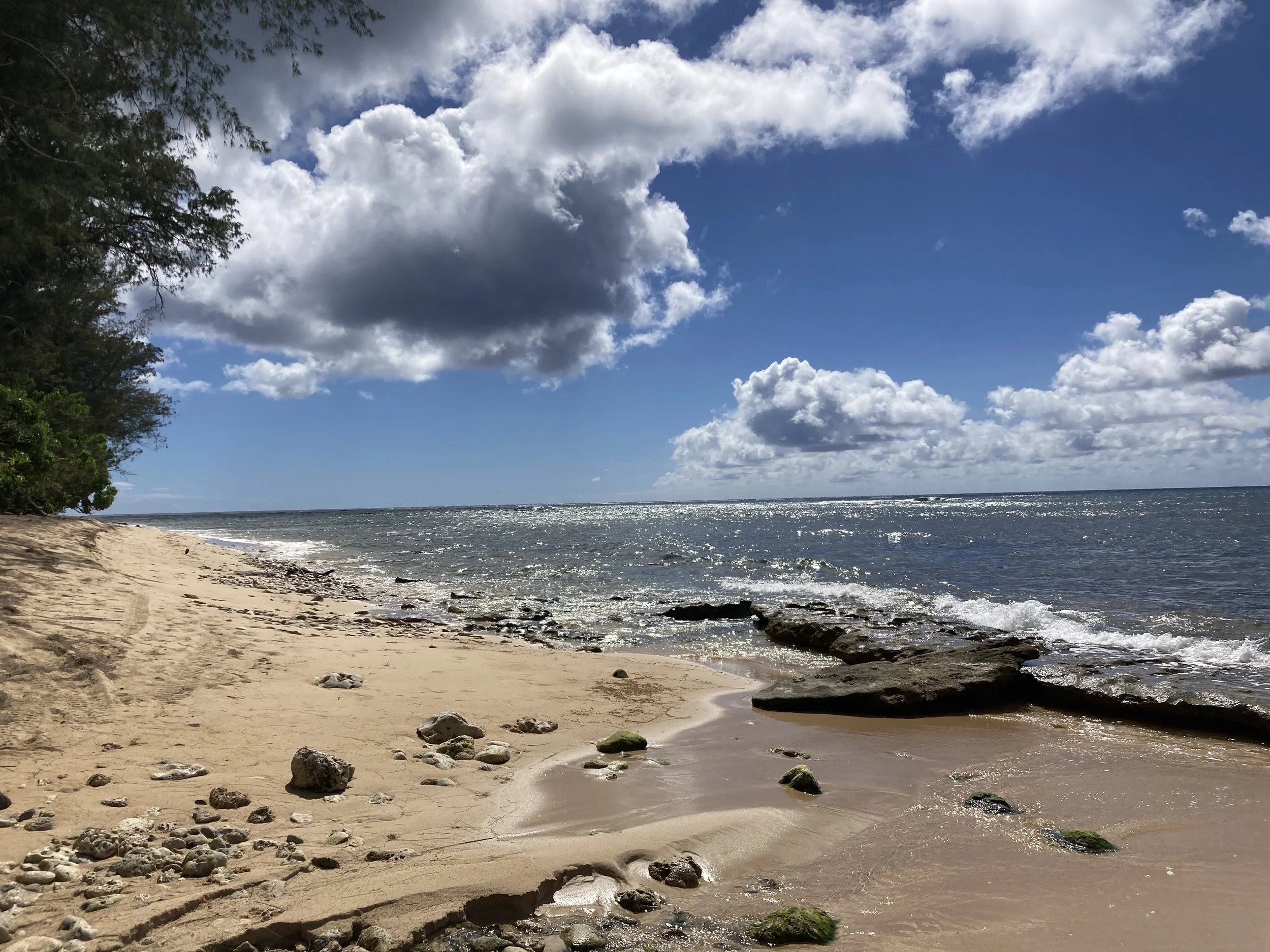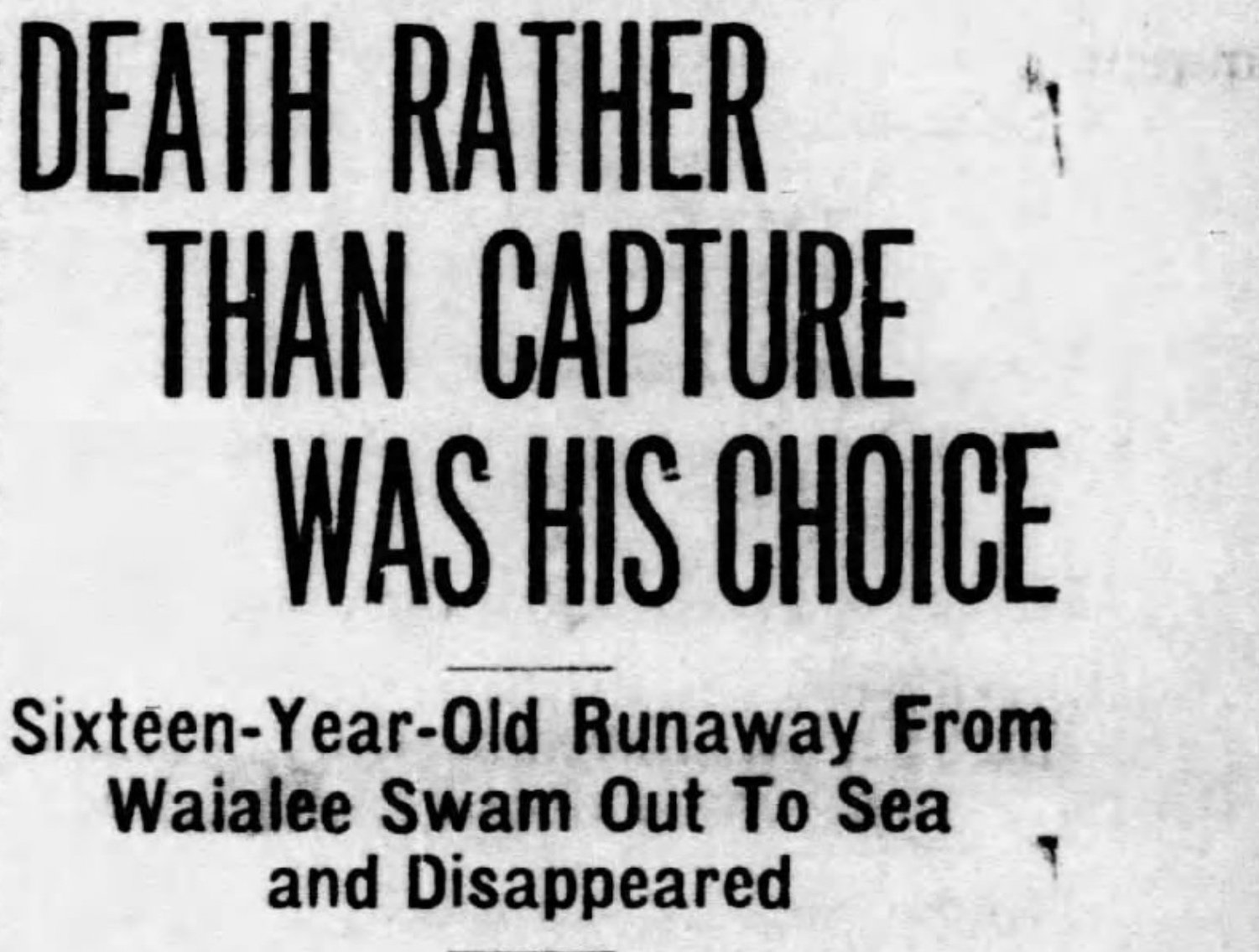The Waialeʻe Runaway Who Swam Out to Sea
One morning in November 1918, Sam K. and his friend Willie C. ran away from the institution where they had been sentenced for the rest of their childhood for petty theft. As soon as the guards noticed they were missing, they began searching for them. Willie was caught just a few hundred feet from Waialua Beach, but Sam refused to give up. He plunged into the ocean.
Photo of the beach at Waialeʻe. Photo by Eliana Massey.
Even though Sam was only 15 years old, he was a strong swimmer. He reached the first line of breakers before the guards could get a canoe into the water. Seeing the canoe coming after him, Sam swam farther out to sea. Soon, a crowd gathered on the beach to watch the race between Sam and the canoe. The guards chased him until they reached the reef, where the waves were crashing hard. At that point, they called a sampan (a small boat) to help find Sam, who had already swum nearly two miles.
Suddenly, Sam vanished. The sampan searched back and forth over the spot where he was last seen, but they couldn't find any sign of him. The crowd of onlookers grew worried, fearing Sam might have drowned from exhaustion or been attacked by a shark and notified the local police of his death.
The Honolulu Star Advertiser ran the headline, "Death Rather Than Capture Was His Choice: Sixteen-Year-Old Runaway From Waialee Swam Out To Sea.” But they spoke too soon. The search party on the sampan kept looking for Sam, and six miles from shore, they spotted him swimming calmly. When Sam saw the boat coming, he tried to escape by diving under the water again and again. On one dive, he made a mistake and surfaced too close to the sampan. A guard grabbed his hair and pulled him onto the boat, even as Sam fought to get free. Despite swimming for three hours, Sam showed no signs of being tired when they finally brought him back to shore. The Honolulu Star Advertiser ran a new headline: "Not Drowned, Just Swam Six Miles Out From Shore.”
Sam's bold escape probably made him a hero among the other boys at the institution. His story spread across the United States, appearing in newspapers in Washington, Tennessee, Ohio, Pennsylvania, Wisconsin, New York, and Arkansas, where he was compared to the famous swimmer Duke Kahanamoku.
In 1938, Sam’s story was reprinted in Hawaiʻi, 20 years after it first happened. That same year, the superintendent at the Waialeʻe Training School for Boys observed that their septic tank system was "inadequate," with waste draining directly into the ocean. He remarked, "I wouldn't think of swimming in the ocean off Waialeʻe." After a long day of work in the fields, many of the boys likely wished to cool off in the ocean, especially since the water pressure on the second floors of the dormitories was barely a trickle.
Sam’s escape is more than the thrilling story of a runaway; it highlights the harsh conditions at the Waialeʻe Training School for Boys, conditions that lasted long after he left. His daring swim out to sea, though ultimately unsuccessful, became a symbol of the desire for freedom.




